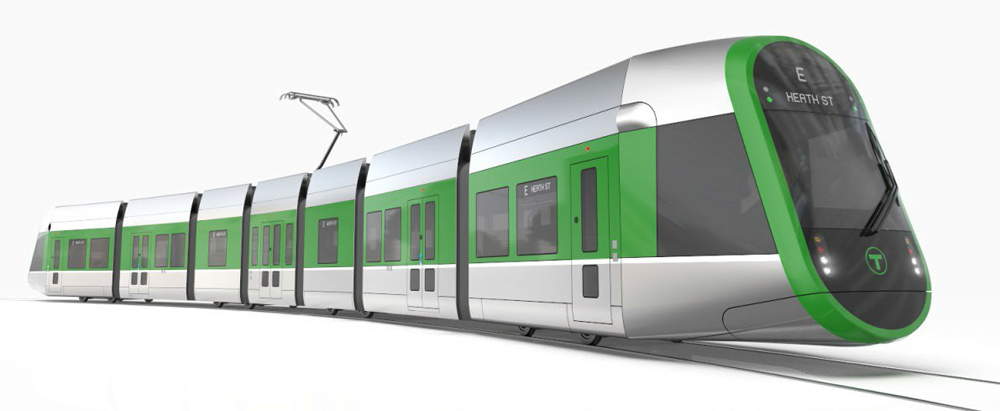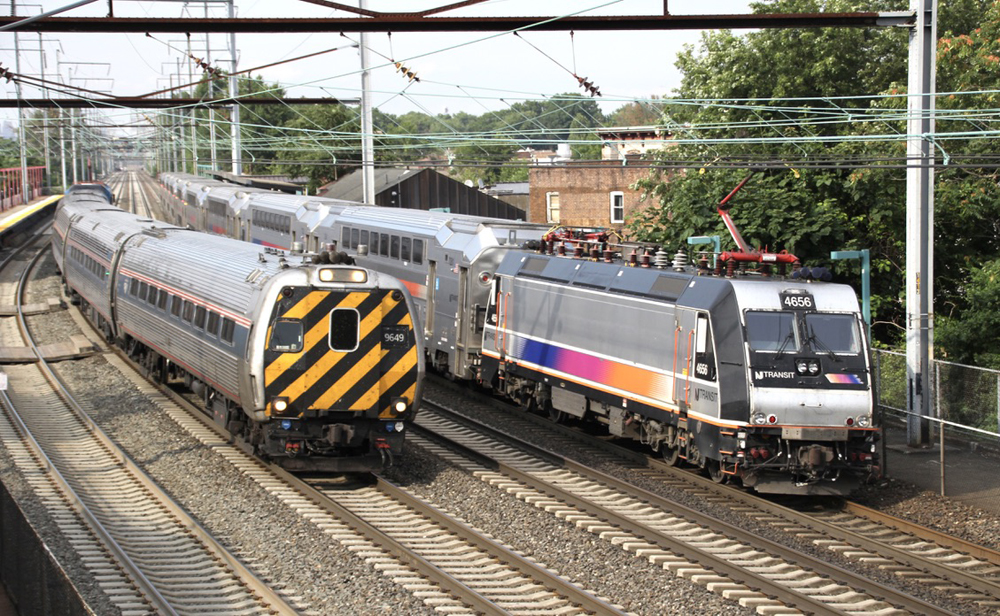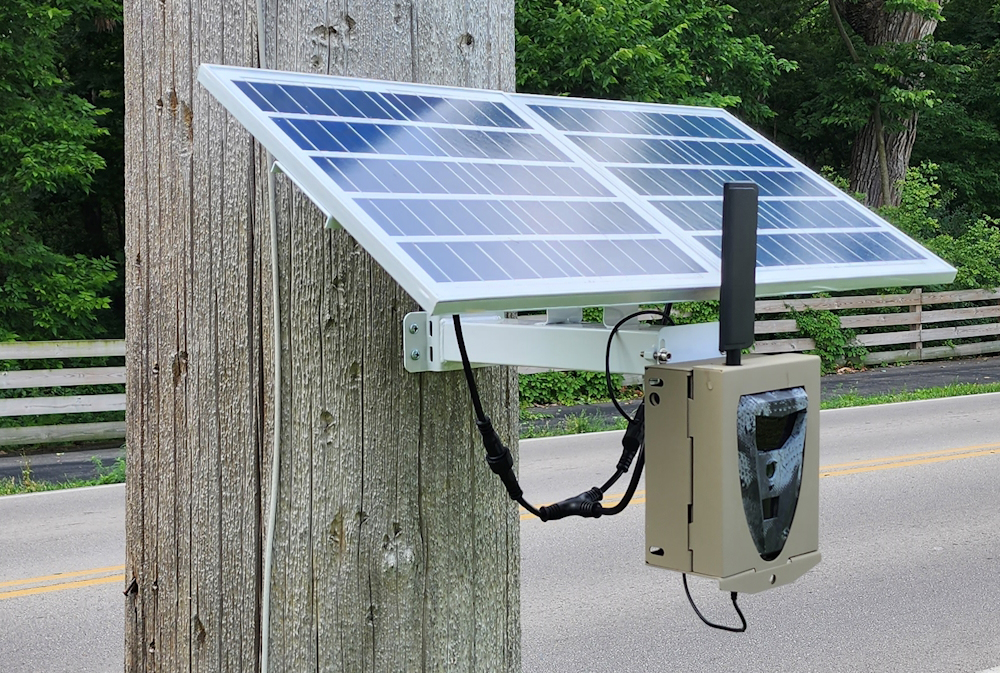
BOSTON — The Massachusetts Bay Transportation Authority has approved an $811 million contract for new light rail vehicles to be built by CAF USA, the American affiliate of Spanish rail equipment manufacturer CAF (Construcciones y Auxiliar de Ferrocarriles).
A CAF news release says the order will be for 102 vehicles, two driving simulators, parts, tools, and test equipment, as well as three years of warranty service. It also includes an MBTA option for additional trainsets.
The new Type 10 trainsets, for use on the MBTA’s Green Line, will be 40 feet longer than the current equipment on that line. They will have a low-floor design with seven modules and feature priority areas for passengers with reduced mobility.
MassLive.com reports plans call for four pilot vehicles to be delivered in spring 2026, with the first production vehicle a year later and the last to be delivered in spring 2031. The first cars are expected to be in service in spring 2027. The MBTA said car shells will be manufactured and assembly will occur at CAF USA’s plant in Elmira, N.Y., while truck frames will be manufactured in Spain.














The song about Charlie was based on MTA’s (the “B” hadn’t been added yet) dual fare system. There was a subway fare and a surface fare and they were separate. The streetcars ran both in their subway and on the surface, so you boarded with the subway fare, and if you remained on the car after it left the subway you owed MTA the surface fare in addition, paid as you exited the car.
Charlie had boarded in the subway, transferred to a streetcar in its subway portion, then stayed aboard on the surface. Thus, when they got there the conductor asked for one more nickel and Charlie couldn’t get off of that train.
A Really bad analogy would be Seattle’s now departed Ride Free Area and buses in the Downtown Seattle Transit Tunnel.Also, used to have a peak hour 2 zone fare, you paid after getting off.
Wonder how many specification changes MBTA will make?. If many then will deliveries be as slow as V-2s?
And no one has commented yet about the “design” of the wedge-shaped front of the car. Makes the front of the trams in Lyon look positively attractive:-)
Looking at the short sections and wheel arrangements (dual axels on the cab sections only and none on their adjacent sections) it looks like they’re designed for very tight curves.
I think the Charlie card in Boston came from the MTA song from years ago where Charlie got stuck on the train because he couldn’t pay the fair increase . Does anyone else remember that song?
But did he ever return, no he never returned
And his fate is still unlearned (poor old Charlie)
He may ride forever ‘neath the streets of Boston
He’s the man who never returned
Of course I remember the song, being that I’m a born and bred Bay Stater and a congenital Red Line patron.
The real question is this: Which ones of you have read the short story (exact title may be lost to memory) “A Subway Named Moebius”. From maybe around 1960. My older brother (who died in Quincy last year; I scattered his ashes by the Red Line/ Commuter Rail R/W at Wollaston Station in Quincy) was a math -loving techie who entered MIT in 1960. He showed me the story.
The short story was set on the MTA subway later named the MBTA Red Line. In those days it ran from Ashmont (in Boston) to Harvard (in Cambridge). This was before the Alewife Extension north of Harvard (or the Quincy – Braintree extension south). You’d have to have been at the Harvard Station in those days to understand how the subway could have been considered to be arranged in a Moebius Strip.
Probably none of you know what I’m talking about. It’s okay. I know you don’t understand the language spoken in the Boston area. I barely do myself.
I’m not making this up. Wikipedia has an article on the 1950 short story, “A Subway Named Mobius”. I was too young to read in 1950, but the story was still around a decade later when my nerdy-tech older brother (who went on to help design Skylab and the Space Shuttle, and to assist in the rescue of Apollo 13) entered MIT. And the story is still remembered to this day.
The “o” in Mobius has an accent not on my keyboard. Typically rendered in English as “oe” so it turns out I do remember the title exactly.
I definitely do. Song by the Kingston Trio. I always liked that song. Kind of hilarious song.
Interesting the names on some of these transit cards. In Boston the “Charlie” card, in the Seattle area the “Orca” card.
Oyster Card in London.
Huh. Didn’t go with CRRC? Wonder why?
Much needed; long overdue.
Shown is the E Heath Street line for Jamaica Plain, the furthest south branch of the Green Line, a branch with a lot of street mileage. Total speculation but it would be interesting if the ultimate fleet is differentiated. The D Riverside train includes no street running.
With the low floors mechanical equipment is at the top. With this new fleet the gear is covered over, unlike with the existing fleet.
The rendering shows the furthest front door aft of the flight deck, meaning the driver will no longer be the fare collector. Most riders have a Charlie Card; the honor system is just as good as what’s now, with the crush loading it’s not now possible for the driver to check fares as it is.